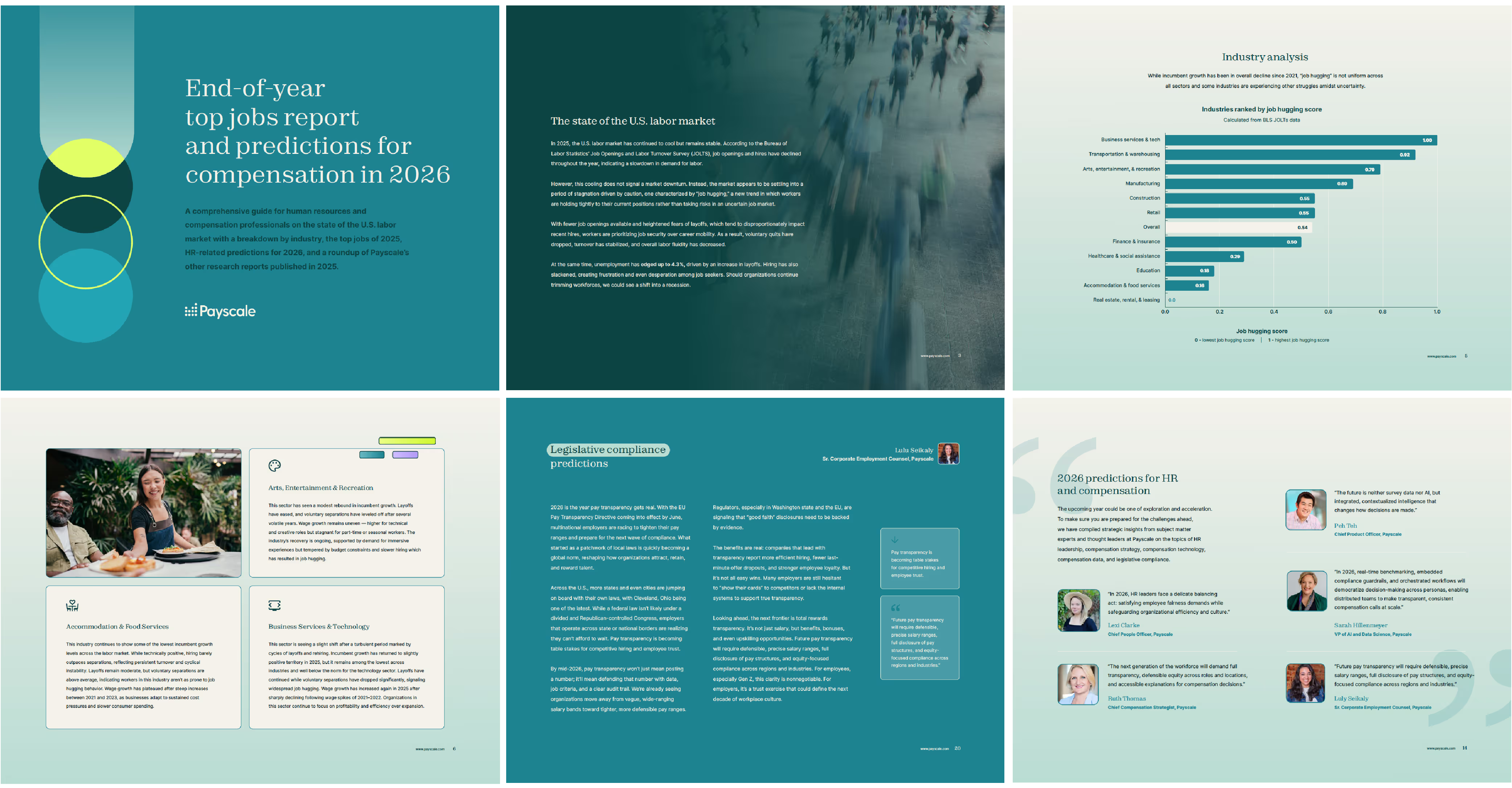Research Reports
Payscale’s 2024 End-of-Year Report looks at the state of the job market going into 2025, the top 10 in-demand jobs in 2024 by wage growth, and the top jobs people are seeking to quit based on Payscale’s Employee Reported survey data. It also covers the top in-demand jobs employers are recruiting for according to our analysis of Lightcast job postings data.
In addition, we offer employers a downloadable guide to the top predictions and recommendations for HR leaders and compensation management professionals in 2025.
The ID is set to default '5900', don't forget to update it if needed.


